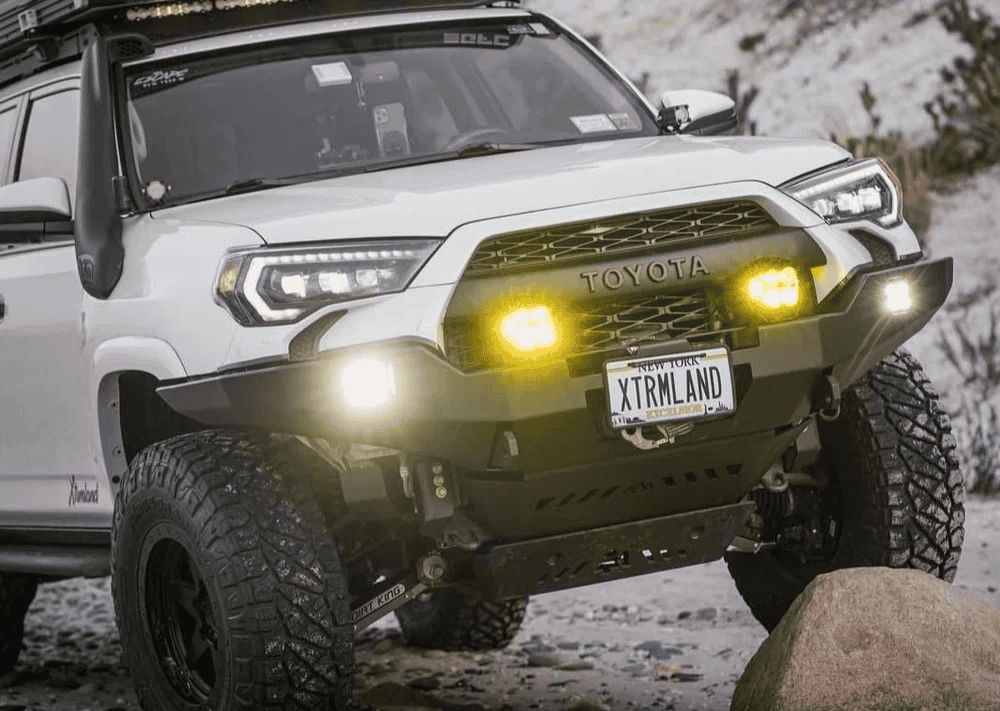Overland Vehicles

Extended range starts with the right configuration. You can replace the factory tank with a larger main unit, add an auxiliary that transfers into the main, or run a day tank feeding the engine while the original becomes storage. Each option has tradeoffs in plumbing complexity, dashboard behavior, and serviceability. Vehicles with returnless fuel systems and sensitive evap monitoring need integrations that preserve pressure targets and vent logic. Baffling inside the tank reduces slosh and fuel starvation on steep terrain. A sound plan considers range math, payload limits, and how often you want to stop for fuel.
Common materials include aluminized steel, stainless, and cross linked polyethylene. Steel handles abrasion and heat well when paired with a skid plate, while polyethylene resists corrosion and is lighter. Baffling and sump geometry matter more than material in rough terrain because they stabilize the pickup during pitch and roll. Look for formed channels and internal walls that slow slosh. Heat reflection and shielding keep fuel temperatures stable near exhaust routes.
A safe integration treats vapor as a controlled system. Correct vent routing, rollover valves, and a charcoal canister interface prevent fuel smell and check engine lights. Modern trucks and vans watch tank pressure through sensors and leak detection monitors. Any change in hose length, valve orientation, or seal quality can trigger faults. Position vents at high points, protect lines from abrasion, and maintain manufacturer grade clamps and seals. Rollover valves must be oriented per spec to close when inverted.
The dash gauge and range readout rely on the sending unit curve and ECU math. If the tank shape changes, the float angle and resistance curve often need recalibration so the display is believable across the entire volume. Transfer setups should avoid confusing the ECU during evap tests. Many builds use a timed or level triggered transfer pump that only runs when the main tank is below a threshold. That prevents overfill and keeps the evap monitor happy.
Fitment under the vehicle is a packaging puzzle. You must maintain driveshaft clearance, exhaust routes, brake and ABS harness paths, and the departure angle. A low hanging tank invites trail damage, so a dedicated skid plate with drain access is essential. Consider these details:
Transfer pumps should be rated for the fuel type and duty cycle. Diesel transfers tolerate continuous run with proper filtration, while gasoline transfers must be sealed, ignition protected, and mounted away from heat. In all cases, a check valve prevents backflow and an inline filter guards injectors or the high pressure pump.
Any change to capacity or routing must respect federal emissions rules and state requirements. Many regions follow EPA and CARB guidance that prohibits tampering with evap function. The safest path is to integrate with the factory canister and leak detection logic, keep the purge line intact, and ensure no raw vapor escapes. For trip planning, estimate range with a margin by multiplying average consumption by usable capacity, then subtract a buffer for wind, sand, or elevation. Maintenance includes periodic checks of clamps, hose condition, and skid fasteners, plus seasonal inspection of pump strainers. In winter, water management and fuel quality are critical since larger tanks store longer. Use fresh, filtered fuel and keep caps clean to avoid introducing dust into the system.
Thoughtful integration pays off during remote travel. Fewer fuel stops mean wider route options and safer decision windows when weather shifts. On high mileage days, that extra cushion often determines whether you press on or camp early.
OZK builds are engineered with this mindset. If you are planning a complete rig, explore our overland rigs and see how fuel capacity pairs with suspension, armor, and electrical systems. For tailored packages, our custom overland upfit process maps tank selection, mount strategy, pump logic, and dash behavior to your platform. Curious about our approach and build quality standards? Learn more at why choose OZK Customs.
Your travel story should not be limited by the last station on the map. Tell us where you go, how you load the vehicle, and what range you need. We will design an integration that protects clearance, keeps sensors satisfied, and delivers quiet, predictable refueling. Then you can focus on the horizon while the miles roll by.
Ready to add true road range without sacrificing safety or drivability? Tell us how you travel and we will design a fuel system that fits your platform and your routes. Submit the form and get a clear plan, timeline, and quote from the OZK team.
ADDRESS:
6159 E Huntsville Rd, Fayetteville, AR 72701
PHONE:
(479) 326-9200
EMAIL:
info@ozkvans.com